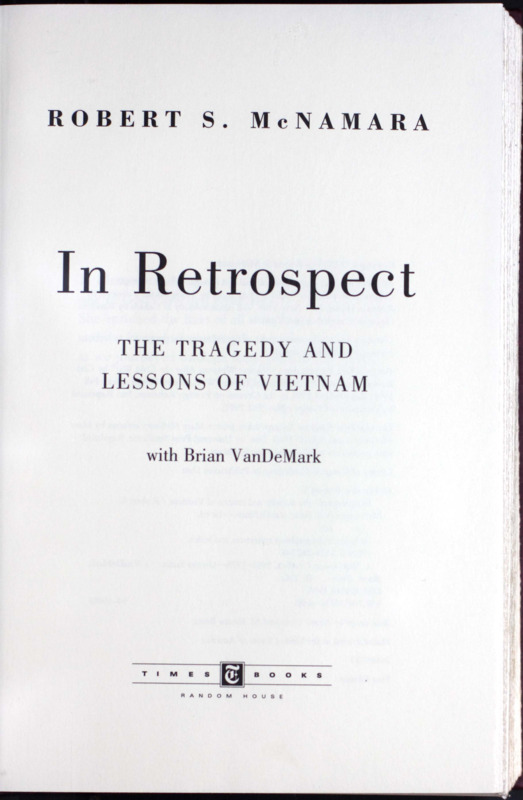Booknotes & Writing
Brian Lamb was well known for asking questions beyond the book’s subject matter. He was especially interested in the ins-and-outs of the writing process. Many authors related this was outside the norm for television interviews. Lamb believed that learning about how an author wrote provided insight into the book world for his audience of avid readers. He also thought these questions helped to show more about the author as a person. The attention paid to the process of writing highlighted the hard work that went into writing a book and celebrated the authors’ accomplishment
In Retrospect: The Tragedy and Lessons of Vietnam
Some authors preferred a “low tech” writing process. One such author was Robert McNamara. In his April 1995 Booknotes interview, McNamara revealed that for his book In Retrospect: The Tragedy and Lessons of Vietnam he chose to write it in longhand. Working from his Washington, D.C. office, McNamara did not use a computer.
Thurgood Marshall: American Revolutionary
Unlike McNamara’s low tech approach, some authors relied heavily on technology. When researching and writing his book Thurgood Marshall: American Revolutionary, author Juan Williams used three separate computers in his writing process.
In this oral history interview, Williams discussed how each computer was dedicated to a different task -- timelines, research, and writing.
The American Presidency: An Intellectual History
Asking authors about their writing process could lead to surprising answers. On May 15, 1994 author Forest McDonald appeared on Booknotes to discuss his book The American Presidency: An Intellectual History.
When asked about his process, McDonald explained that he often wrote in the nude on his front porch in rural Coker, Alabama. In this picture, a clothed Forest sits on his front porch, showing Lamb where he wrote. At the time, Lamb was researching Booknotes: America’s Finest Authors on Reading.


